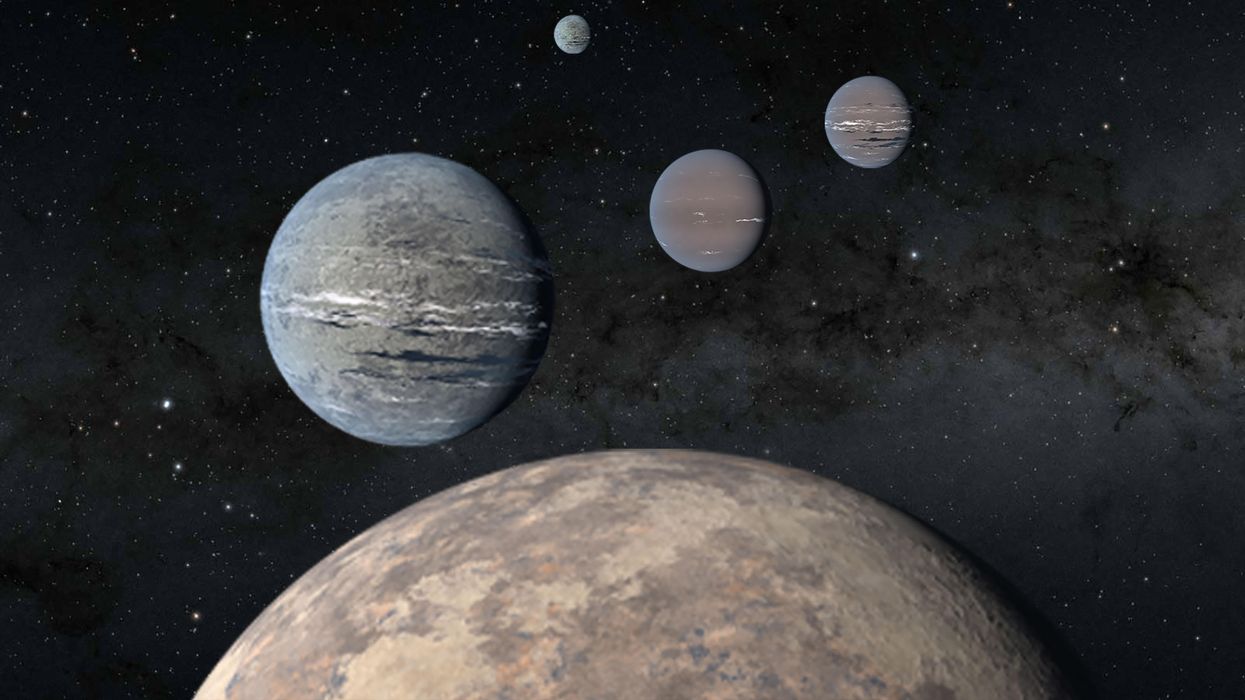
Credit: NASA/JPL-Caltech

They may be the youngest astronomers yet to make such a major discovery
A pair of high schoolers are being commended for making a major astronomical discovery after they identified four new planets in orbit around a star approximately 200 light years away from Earth.
The two students, 16-year-old Kartik Pinglé and 18-year-old Jasmine Wright, both of whom attend schools in Massachusetts, were elated at taking part in the discovery and wrote about it in a peer-reviewed paper published by the Astronomical Journal last week.
The finding may make them the youngest astronomers yet to make such a major discovery, according to a press release about the news published by the Center for Astrophysics, a collaboration between Harvard University and the Smithsonian Institution.
The students made their discovery as part of the CFA's "Student Research Mentoring Program," an initiative that pairs students interested in research with real-world scientists who then together embark on a year-long project.
As part of the program, the high schoolers were selected to work alongside Tansu Daylan, a postdoctoral researcher at the Massachusetts Institute of Technology, analyzing data from the Transiting Exoplanet Survey Satellite (TESS), a satellite that orbits the Earth and surveys nearby bright stars hoping to discover new planets.
The team focused on a nearby Sun-like star referred to as TESS Object of Interest 1233 to perceive whether or not planets were in orbit around it.
"We were looking to see changes in light over time," Pinglé explained regarding the research. "The idea being that if the planet transits the star, or passes in front of it, it would [periodically] cover up the star and decrease its brightness."
While probing the star, the students had hoped to discover at least one planet, but to their surprise, they ended up finding four.
"I was very excited and very shocked," Wright said of the discovery. "We knew this was the goal of Daylan's research, but to actually find a multiplanetary system, and be part of the discovering team, was really cool."
According to the research paper, the three outer planets are considered "sub-Neptunes," or gaseous planets that are smaller than but otherwise similar to our solar system's planet of the same name, while the innermost planet is considered a "super-Earth" due its large size and rockiness.
The program's director, Clara Sousa-Silva, noted that Pinglé and Wright's achievement is rare.
"Although [it] is one of the goals of the SRMP, it is highly unusual for high-schoolers to be co-authors on journal papers," she said in the press release.
Daylan added that it was a "win-win" to work alongside Pinglé and Wright and make a major discovery
"As a researcher, I really enjoy interacting with young brains that are open to experimentation and learning and have minimal bias," he said. "I also think it is very beneficial to high school students, since they get exposure to cutting-edge research and this prepares them quickly for a research career."
According to the press release, Pinglé, who is still just a junior in high school, is considering studying applied mathematics or astrophysics after graduating, while Wright has been accepted into a five-year master of astrophysics program at the University of Edinburgh in Scotland.